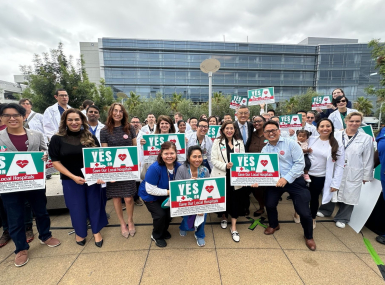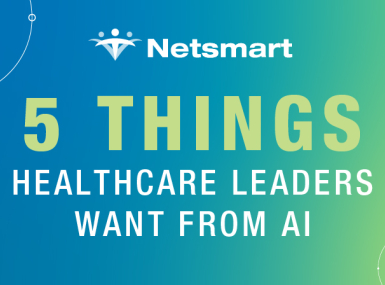Health department workforce has shrunk 23 percent since 2008
Author

Adriane Casalotti
Upcoming Events
Related News

Key Takeaways
Leaders of the National Association of County and City Health Officials (NACCHO) representing the nation’s nearly 3,000 local health departments recently met with their representatives on Capitol Hill to educate them on the most pressing public health issues affecting their communities. Here, Adriane Casalotti, NACCHO’s chief of Government and Public Affairs, outlines some of the issues that will be brought to Congress’ attention.
Q. NACCHO’s Board of Directors and associated leaders recently met with their respective representatives on Capitol Hill. What did they discuss?
Local public health leaders work day in and day out to help keep their communities safe and healthy. This can be leading the response to outbreaks of measles or other infectious diseases, leading a community-wide effort to address opioid addiction or homelessness or convening local health care professionals, hospitals, law enforcement and others to ensure that the community is ready to respond to a disaster. These are complex issues. In so many ways, local public health departments are the chief health strategists in their communities.
But we can only do so with continued, sustained, federal support. Unfortunately, without a budget deal, our nation is looking at the equivalent of a 10 percent across the board cut to non-defense discretionary programs, including the vital public health programs that support local health departments as they work to keep us all safe. We need Congress to raise the spending caps, and then work together to ensure that public health issues are prioritized in next year’s funding decisions.
Recently, local public health officials held over 100 meetings with elected representatives to share this message and educate their members of Congress about the pressing public health needs facing their constituents.
Q. What types of issues are local health departments addressing right now?
Local health departments collaborate with community and private-sector partners to ensure the safety of the water we drink, the food we eat and the air we breathe. They are a critical part of every community’s first response to disease outbreaks, emergencies and acts of terrorism and they help combat the rising cost of healthcare due to ailments like diabetes and heart disease through community-level interventions.
With such a wide range of responsibilities, there is never a dull moment in the life of a local health department, and right now is no exception as you can see with the current measles outbreaks in communities across the country. Ninety percent of local health departments report participating in direct immunization efforts and educating their community. And combatting misinformation is a growing responsibility for these groups.
While it is heartbreaking to see any child dealing with a preventable affliction, there is a real cost to these preventable cases. For example, Oregon had its first case of pediatric tetanus in over 30 years, costing more than $800,000 to treat one child who was unvaccinated. Local health departments are on the front lines of educating communities and delivering these life-saving interventions, as well as keeping track of disease outbreaks and using data to identify communities at-risk.
Similarly, local health departments are key players in addressing and responding to the nation’s opioid epidemic. Local health departments work to reduce the toll of opioid abuse and overdose through surveillance, education of healthcare providers and the public, training first responders and the public about overdose reversal medications, promoting substance abuse treatment programs and bringing together community partners to develop effective local responses. While these stories are no longer the lead in newspapers each day, the work on the ground continues to turn the tide of this epidemic.
Q. What else can policy-makers do to support their local public health departments?
Despite the efforts of many, Congress did not complete its reauthorization of the Pandemic All-Hazards Preparedness Act last year. This law, which was due for reauthorization by Sept. 30, 2018, is the backbone of our nation’s health security and provides key provisions that help prepare our nation’s healthcare and public health systems to respond to disasters, including the Public Health Emergency Preparedness grant program and Hospital Preparedness Program.
But reauthorizing this legislation is just one step toward ensuring our local communities have the resources they need to keep our communities safe. While public health threats are a constant and increasing concern, federal funds have declined over the past decade.
Similarly, our nation’s public health system faces a different kind of threat. After years of budget cuts and doing more with less, the local health department workforce in the United States has shrunk 23 percent since the impact of the Great Recession began in 2008. While much of the rest of the public sector has recovered, or grown, local health departments rolls have shrunk from 190,000 a decade ago to around 147,000 in recent years. This deficiency is compounded by the much older age of the local health department workforce — 55 percent are over age 45 and almost a quarter are eligible for retirement. These workforce numbers are concerning at the local level, but should be as well to federal policy makers. It will take sustained investment and targeted approaches to ensure that we not only have a robust workforce, but one that is trained for the innovative public health careers of the future.
Q. Any final thoughts?
The public health system is a partnership across the local, state, and federal levels. It is always at the ready, working behind the scenes, but often not noticed until tragedy strikes. That makes our job of educating elected officials and the public about our value harder, but perhaps even more important.

Attachments
Related News

CMS issues new guidance on Medicaid Community Engagement Requirements
On December 8, the Centers for Medicare & Medicaid Services (CMS) released a Medicaid and CHIP Services Informational Bulletin (CIB) directing states on how to implement the Medicaid community engagement requirements enacted under Section 71119 of the One Big Beautiful Bill Act legislation (Public Law 119-21), or H.R. 1.

California county sales tax measure backfills federal healthcare cuts
Santa Clara County, Calif. will raise an estimated $330 million each year from a sales tax to backfill lose Medicaid funding.
